Transfer to Sigiriya
The drive time is approximately 3 -4 Hours.
We have not made any arrangements for you on this day.
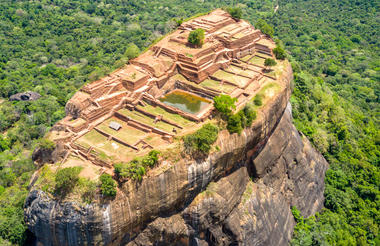
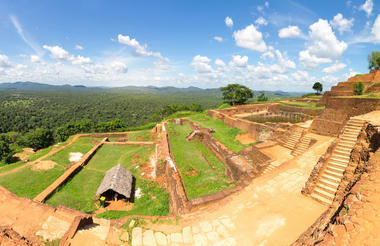
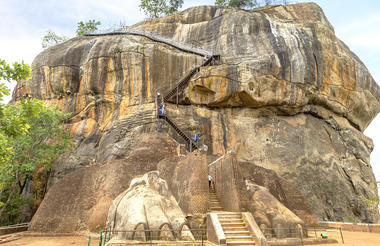
Ancient City of Polonnaruwa
Polonnaruwa was the 2nd capital city of Sri Lanka, built in the 11th and 12th centuries AD, and which is also a World Heritage Site. Within the ruins of the Royal Palace, the Gal Viharaya, there are four splendid statues of the Buddha in 'Upright', 'Sedentary' and 'Recumbent' postures carved out of rock. In addition, the remains of stunning buildings including the Audience Hall, the Lotus Bath, king Parakramabahu's statue, and the Parakrama Samudraya lake built by King Parakramabahu the great, provide an insight into this great historic city. Polonnaruwa is also home to monuments of famous places of worship including the Shiva Temple, the Lankathilake, the Watadage, the Galpotha, the Kiri Vehera and the remains of a former Temple of the Tooth Relic, now found in Kandy. Approximately a one-hour drive from Sigiriya, we recommend most clients visit Polonnaruwa in conjunction with Sigiriya during a stay in the Cultural Triangle. Visiting Polonnaruwa in the morning combines well with an afternoon Jeep Safari from Harbarana, in one the close-by national parks to see wild elephant and the vast array of local wildlife.
Loris Searching at Night with the Resident Naturalist
The private biosphere of our property shares a habitat with the elusive Grey Slender Loris, a nocturnal primate hidden in the scrublands beyond your dwelling. Known for its protruding eyes and nimble limbs, the loris scavenges for insects and berries above the trees on a moonlit trail that has been carefully designed for you to observe the rare creature in its natural habitat. Accompanied by our resident naturalist, a quiet evening walk takes you through the streams and bamboo bridges of our lush forest eco-system to the Loris Information Centre and Conservation Site. Equipped with harmless red light emitting headlamps that reflect off the characteristic eyes of our resident loris population, your silent search may even be prized with a close-up encounter of this fleeting species.



Loris Searching at Night with the Resident Naturalist
Climb Sigiriya Rock Fortress
This is one of the most amazing historical sites of Sri Lanka and a must visit. However, take heed, the climb to the top (about 1200 steps)takes about 1-1/2 hours. Not suitable for those who are unfit or cannot deal with heights. Take a moment to read our expert tips.
Sigiriya (Lion Rock) Referred by locals as the Eighth Wonder of the World this ancient palace and fortress complex has significant archaeological importance and attracts thousands of tourists every year. It is probably the most visited tourist destination of Sri Lanka. Sigiriya rock plateau, formed from magma of an extinct volcano, is 200 meters higher than the surrounding jungles. Its view astonishes the visitors with the unique harmony between the nature and human imagination. The fortress complex includes remnants of a ruined palace, surrounded by an extensive network of fortifications, vast gardens, ponds, canals, alleys and fountains. In the 3th century BC the rocky plateau of Sigiriya served as a monastery. In the second half of the 5th century King Kasyapa decided to construct a royal residence here. After his death Sigiriya again became a Buddhist monastery until the 14th century, when it was abandoned. The main entrance is located in the northern side of the rock. It was designed in the form of a huge stone lion, whose feet have survived up to today but the upper parts of the body were destroyed. The western wall of Sigiriya was almost entirely covered by frescoes, created during the reign of Kasyapa. Eighteen frescoes have survived to this day. The frescoes are depicting nude females and are considered to be either the portraits of Kasyapa’s wives and concubines or priestess performing religious rituals. One of the most striking features of Sigiriya is its Mirror wall.
For those who are not comfortable with heights or have problems climbing we suggest the gardens of Sigiriya which are among st the oldest landscaped gardens in the world. They are located in the western part of the rock with bridges, fountains, as well as surface and underground water pumps.
At leisure.



Morning
Transfer to Wilpattu - drive time is 2.5 Hours.
Ritigala Forest Monastery
Rithigala is a strict nature reserve and an ancient Buddhist monastery dating back to the 1st century BC. The road leading up to the ruins of the monastery is in a poor condition; however it is a bumpy but exciting drive through lush tropical forest, with monkeys swinging on the branches of tall trees, and also teeming with a large variety of birdlife and butterfly species. When you reach the ruins, which is about an hour’s walk from the entrance, through the forest you get a real sense of the peaceful, tranquil surroundings of the ancient monastery.
Jeep Safari at Wilpattu National Park
The park is situated along the Northwest coast lowland dry zone of Sri Lanka. It comprises of a unique complex of lakes called Villus, which are natural basins that are filled up with rainwater and are surrounded by open grassy plains set within dense scrub jungle. A multitude of sandy paths wind around the entire park and open up into these large natural lakes. The unspoilt and beautiful Wilpattu National Park is one of the largest and oldest National Parks in Sri Lanka. It is ideal for those wanting to escape the flurry of activity of Yala and instead offers the opportunity for a tranquil, peaceful and undisturbed drive.
The biggest draws in Wilpattu are Leopards and Sloth bears. Alongside these, it is possible to see Asian Elephants, Spotted Deer, Barking Deer, Wild Pig, Asiatic Buffalo and Mugger Crocodiles. Endemic birds include the Ceylon Junglefowl, Brown-capped Babbler, Ceylon Woodshrike and Black-capped Bulbul in riverine habitats. Muntjac or Barking Deer are more easily seen in Wilpattu than any other national park. Butterflies recorded include the Great Egg fly, Great Orange Tip, Glad-eye Bush brown, Blue Mormon, Common Mormon, Common Rose and Crimson Rose.



Afternoon
Ritigala Forest Monastery
Jeep Safari at Wilpattu National Park
Morning and Afternoon Jeep Safari



Morning Jeep Safari - Wilpattu
Dambulla Rock Temple
The Dambulla Rock Temple was donated by king Walagambahu in the 1st century BC to Buddhist monks. Dambulla is a World Heritage Site and is the most impressive of Sri Lanka's cave temples. The complex of five caves with over 2000 sq. meters of painted walls and the ceiling is the largest area of cave paintings found in the world. These caves contain over 1500 images of the Buddha of which the largest is the colossal figure of the Buddha carved out of rock spanning 14 meters. Close to the town of Dambulla this attraction is easily accessed although it requires walking up a considerable number of steps to reach the caves from the road. If you are a little short of time, a visit to the Dambulla rock temple can be combined with travelling to or from the Sigiriya area.
Transfer to Kegalle - Drive time is approximately 3.5 Hours.



Temple of the Sacred Tooth Relic Kandy
Kandy was the last capital of the Sri Lankan kings, and is a World Heritage Site. The name Kandy conjures visions of splendor and magnificence. Many of the legends, traditions and folklore are still lovingly kept alive. Drive around the Kandy Lake built by the last Sinhala king Sri Wickrama Rajasinghe in 1798. Visit the Kandy town and Bazaar, the arts & crafts center and a gem museum and a lapidary. In the evening visit the Dalada Maligawa Temple of the Tooth Relic believed to have belonged to Lord Buddha himself. Thereafter witness a cultural show featuring traditional Sri Lankan dancing.
The City is perhaps most famous for the annual Perahara, a most magnificent site which sees the scared tooth relic take to the streets accompanied by dancers, drummers and most significantly elephants dressed in all their finery and adorned with lights. The parade which goes through the streets of Kandy builds into a spectacular procession over ten consecutive nights with the number of elephants growing each night. Taking place annually at the end of July and in early August, with the date dependent upon the timing of the full moon, this is truly an experience not to be missed if your timing permits. The Kandy Perahara is considered to be one of the most spectacular pageants in Asia. During the Perahara, accommodation is at a premium in Kandy and needs to be reserved well in advance.
Peradeniya Royal Botanical Gardens
This botanical garden was first built as a pleasure garden by a Sinhala king and was expanded by the British during the period of colonial rule. Royal Botanical Garden, Peradeniya (5.5 km west of Kandy) is renowned for its collection of a variety of orchids and includes more than 4000 species of plants, including of orchids, spices, medicinal plants and palm trees.The Botanic Gardens crested in 1371 when King Wickramabahu III kept court at Peradeniya near Mahaweli river. This was followed by King Kirti Sri and King Rajadhi Rajasinghe. A temple was built on this location by King Wimala Dharma, but it was destroyed by the British when they were given control over the Kingdom of Kandy. Alexandar Moon then created the botanical gardens in 1821. The Botanical Garden at Peradeniya was formally established in 1843 with plants brought from Kew Garden, Slave Island, Colombo, and the Kalutara Garden in Kalutara.
The classical Avenue of Palms is located in this Garden. One tree with a significant history is the Cannonball Tree planted by King George V of the United Kingdom and Queen Mary in 1901. During the Second World War, the Botanical Garden was used by Lord Louis Mountbatten, the supreme commander of the allied forces in the South Asia, as the headquarters of the South East Asia Command.



Morning
Kandy Tooth Temple
Afternoon
Hands-On Cooking at Rosyth Estate House with the Chefs
Join in a delightful culinary adventure at Rosyth Estate House, where you can immerse yourself in the art of cooking alongside Rosyth's talented chefs. Begin your journey around 10 AM or 11 AM with a walk to the organic kitchen garden, where you'll discover a vibrant array of fresh herbs, vegetables, and spices. Our chefs will share fascinating insights about the various spices that elevate our dishes, enriching your understanding of their flavours and uses.
Next, learn the traditional technique of grating a coconut, a staple in many delicious curries. As you progress, you’ll dive into the hands-on experience of chopping, frying, and expertly blending ingredients to create five mouth-watering curries. With guidance from the chefs, you’ll discover the secrets behind each dish, allowing your culinary skills to flourish.
Once your creations are complete, sit down and savour the fruits of your labour. Enjoy your curries accompanied by fragrant rice, zesty chutneys, and crispy poppadom, all in a warm and inviting atmosphere that celebrates the joy of cooking and sharing food. Whether you're a seasoned chef or a curious beginner, this immersive experience promises to be both educational and delicious!
Rosyth Artisanal Tea Tasting Experience
Whether you’re a tea lover or simply curious, the Rosyth Tea Tasting Experience is an unforgettable journey into the world of artisanal tea. Just a short walk from the estate house, visit the micro tea factory, where small batches of handpicked tea are crafted with care. You’ll receive a brief introduction to the tea-making process, followed by the opportunity to taste a selection of teas, each with its own unique character.
For those who want a deeper immersion, the Rosyth Tea Experience offers a chance to make your own tea, available for guests staying long enough. All proceeds from the tea experience go to the Rosyth Foundation, supporting the local community and school.
The new micro tea factory is part of a social enterprise project, aiming to provide economic sustainability for the community. Rosyth Estate’s shift to organic and artisanal tea production helps create a more hands-on, community-focused approach to tea making, offering a fair dividend to all those involved in the process.



Rosyth Artisanal Tea – Their tea journey
At Rosyth, determined to move away from the traditional methods of producing tea that have remained the same since the colonial era, the owners have begun their journey to become an organic, artisanal producer of Sri Lankan tea. Removing much of the mechanisation from the processes they have started to produce hand crafted teas. The leaves are carefully manipulated by rolling or pounding on the estate by their local artisans. The micro factory was constructed in the first quarter of 2023 and they moved into production in the second quarter of 2023. The artisanal
This project is wholeheartedly community focused, as they look to improve the economic sustainability of the valley. Each and every person connected to production of the tea is now a partner with a stake in the future success. The partners will receive a guarantee of 10% of the estate tea revenues as a dividend payment on top of their wages. In the coming years, they hope the initiative will vastly increase the prosperity of our local community with the skills and investment to help it flourish. Artisanal Tea can be sold for
The process follows the classic steps of tea production but with an all together more personal and hands on approach:
Step one – Plucking: the fresh leaves are plucked by hand by our skilled tea pickers. For our highest quality hand rolled artisanal teas we delicately pick just one leaf and a young bud, carefully separating the slightly larger leaf which is hand processed separately. On arrival in the factory, the leaf is further inspected & any stalks removed.
Step two – Withering: the leaves are carefully laid out on withering trays, locally know at “Tats”. Tea leaves, even fresh tender ones are not pliable and would shatter when rolled and shaped. Drying gently on the tats, the leaf is left for up to 20 hours to gently wither, loosing up to 35% of its moisture content. As it withers, the leaf is gently turned to allow an even exposure to the air.
Step three – Hand Rolling: the withered leaves are now gently rolled by hand in wicker baskets by our artisans to gently break the cell structure of the leaf and to release the enzymes & natural oils within the leaf. Natural juices are slowly released, and the leaf becomes slightly sticky to the touch. Taking up to two hours to complete care is taken to maintain the structure of the leaf.
Step four – Oxidation: after completing the rolling, the leaf is left for up to two and half hours to allow oxidation to take place. This is the critical part of the process where the air interacts with the now exposed enzymes, heat is produced, and the flavour of the tea fully develops. The leaf turns a reddish-brown colour as the chemical composition changes & the wonderfully complex flavours of our tea develop. The time taken for oxidation varies, depending on a number of factors including the air temperature and the humidity levels, but as the chemical reactions develop and temperatures around 43c are reached, it is time to stop the oxidation and dry the tea.
Step five – Firing: time is now the essence, the tea needs to be dried, the oxidation process stopped, and leaves dried to perfection. In our artisan factory the leaf is spread onto the trays and placed into a drying over at temperatures between 85-110c. Good even drying, with low residual moisture levels, is essential to being able to store the tea, typically reached in one & a half hours.
Step six – Grading and sorting: once dried, the clock stops ticking and we can be more relaxed with final sorting and grading of the tea. Our highest quality OP grades are carefully sorted, before all the teas are packed into airtight foil bags to maintain the optimum freshness. Nothing is wasted, the small leaf particles carefully separated and blended to produce lower grade teas – in large commercial factories this would often end up in tea bags!
Morning
Afternoon
Transfer to Gampola Railway Station. Drive time is 1.5 Hours.
Morning Scenic Train Journey from Gampola to Ella (ON AVAILABILITY)
The train journey is on the bucket list of most travellers to Sri Lanka. Why is the Gampola to Ella train journey so amazing? The views on both sides of the rail are breathtaking but it is a journey on one of the most charmingly decrepit railway systems in the world which reinforces the desire to travel in a modicum of discomfort! We recommend that you are ask your hotel the night before your trip to put together a packed lunch for the journey.
The railway journey Service began in 1864 with the construction of the Main Line from Colombo to Ambepussa and was extended to the high tea country. At Rambukkana, the line begins a steep climb into the hills. From Rambukana to Kandy, at Kadugannawa the track runs along the edge of sheer cliffs, allowing passengers a view of Batalegala (Bible Rock).
The Main Line From Colombo then continues climbing through tea country, connecting market centers at Gampola and Hatton before reaching Nanu-Oya. This is the connection to the former colonial resort of Nuwara Eliya, still visited for its temperate climate, classic hotels and British-style gardens. The Main Line reaches its summit at Pattipola, 6,226 feet (1,898 m) above sea level, before descending via Ella and Bandarawela to Badulla. The spectacular tea gardens, mountains, valleys and waterfalls.
During the train journey, you can walk around the carriages, go to the toilet, visit the food stand or purchase some snacks from vendors who wander about. Don’t miss the opportunity to take in the view via the open doorway, tea plantations, villages and bridges with eerily huge drop-offs.
The tickets for the train journey can only be booked 1 month prior to departure and as a result it has become increasingly challenging to obtain the tickets. To maximize our success we would look to purchase 1st ,2nd and 3rd class in that order as well as trying for portions of the journey. Your driver guide will have your tickets and would drop you at the train station and wait with you until the arrival of the train, help you to board the train and drive with your luggage to the station to meet you.
Afternoon at leisure - no arrangements made.



Morning
Morning Scenic Train Journey from Gampola to Ella (ON AVAILABILITY)
AMBA Estate - Activities and Attractions
Amba is the ideal place to relax and unwind. For those who want to escape the pressures of modern life, we offer a wide range of books and games, comfy sofas, shady verandas and stunning vistas for a quiet stroll or meditation. But for those in the mood for adventure, there is a wide range of activities and attractions in and around Amba Estate. Here is a small selection of some highlights.
Farm Tours: Guests are welcome to stroll the farm, meet our herd of rescue cows, and learn more about organic methods for cultivating tea, coffee, cinnamon and a whole range of herbs and spices, fruits and vegetables. We offer a free tour of our artisanal tea and coffee production every day at 11am. Depending on the production schedule, you may also be able to see how we hand-process our tea and other products – and even try your hand at plucking and rolling your own batch of tea! Wildlife and Birdlife: The valley is full of wildlife and birdlife. We commonly see kingfishers, hornbills, humming birds, peacocks, parakeets, woodpeckers, as well as birds of prey and the Jungle Fowl, Sri Lanka’s national bird. On hikes up the mountain or down into the forest below, you are more than likely to see monkeys, deer, rabbits and mongooses, as well as occasional sightings of wild boars, porcupines, civet cats and other nocturnal creatures (including one unconfirmed leopard!)
Hiking: There are a variety of walks in and around the estate. These range from gentle strolls through the tea, cinnamon and lemongrass fields, to more strenuous hikes. A 30-minute walk leads down to the abandoned hydro-powered tea factory and the secluded pools and spectacular rock shelves at the top of the Ravana-Ella Waterfalls. A 1-2 hour hike through Amba’s 50-acre forest reserve leads to our own secret cave and waterfall, with frequent sightings of monkeys pillaging the mango, avocado and banana trees along the way. A 2-hour hike climbs more than 400 meters to the top of Ella Rock. From there you can return to the farm or hike down to Ella town on the other side, enjoy a drink or meal in one of the cafes and restaurants, and then take a tuk-tuk back to the farm.
Excursions: Winding roads lead from the Estate to Lipton’s Seat and to Pilkington Point, where you can enjoy a good view– ideal for breakfast picnics, before the clouds roll in from the shimmering plains below. On the way back, you can also stop on the Poonagala Road at a little-known spot where you can walk through the meadows to the spectacular rock pools at the top of the Diyaluma Falls – just watch out for the wild elephants who frequent the area.
Ravana Falls
Ravana Falls is another must visit in Ella. Hill country of Sri Lanka is quite popular for beautiful waterfalls and Ravana Falls is right at the top.
The falls are quite impressive, and you can climb over some of the rocks to get a closer look. If you love water and want to have some splash time, enjoying some hours in the waterfall, then this is the place in Ella. You can spend some time swimming but be safe as the rocks are slippery.
It currently ranks as one of the widest falls in the country. This waterfall measures approximately 25 m (82 ft) in high and cascade from an oval-shaped concave rock outcrop. During the local wet season, the waterfall turns into what is said to resemble an area flower with withering petals. But this is not the case in the dry season, where the flow of water reduces dramatically.
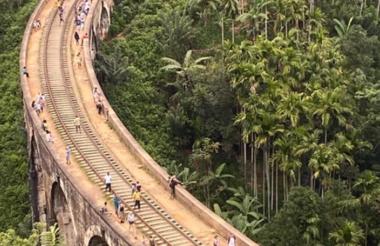
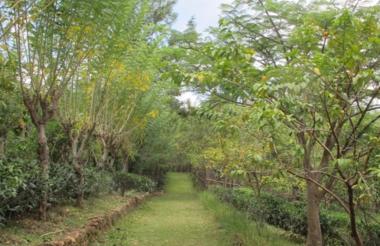
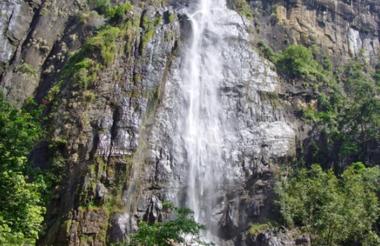
Morning
Morning
Transfer to Kumana. Drive time is 5 Hours 31 Minutes.
Kumana Jeep Safari
Depart early morning and travel to Kumana National Park. Begin the guided jeep safari through the park, known for its rich birdlife and diverse wildlife. Sightings may include elephants, crocodiles, wild boar, jackals, and the occasional leopard. The park is also home to over 250 bird species, including painted storks, black-necked storks, egrets, herons, and spoonbills.



Jeep Safari – Kaudulla National Park
Morning and Afternoon Jeep Safari - Kumana National Park
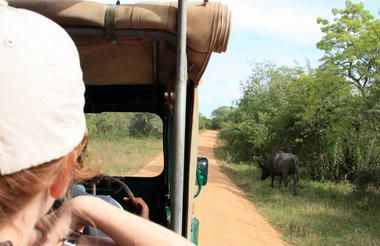
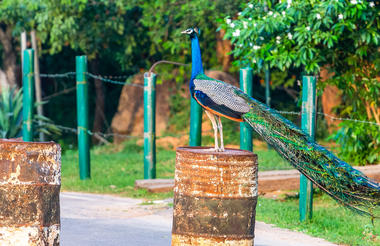
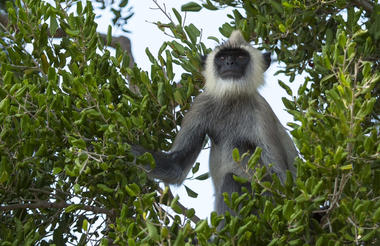
Morning and Afternoon Jeep Safari - Kumana National Park
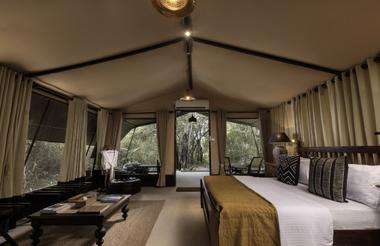
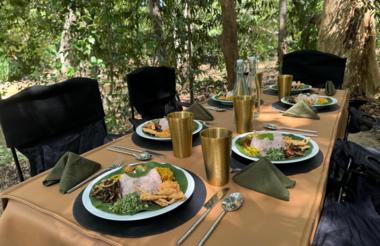
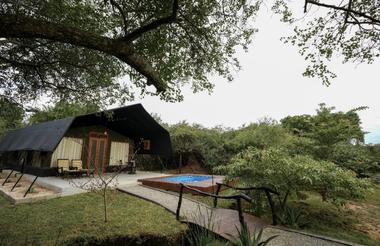
Morning Jeep Safari
Transfer to Yala. Drive time to Yala is 2.5 Hours.
Yala National Park, located in Sri Lanka’s southeast, is a wildlife haven renowned for its high density of leopards, offering some of the best chances to spot these elusive big cats. Beyond leopards, Yala is home to elephants, sloth bears, crocodiles, and over 200 bird species, making it a paradise for nature lovers and photographers. The park’s diverse landscapes range from open grasslands and dense forests to coastal lagoons. Guided jeep safaris provide unforgettable encounters with wildlife in their natural habitat. With its stunning biodiversity and rugged beauty, Yala is a must-visit for any Sri Lanka itinerary.
While Block 1 is the most visited area, it can often feel crowded due a higher density of leopard and as a result many more safari jeeps. For a more peaceful experience, consider exploring Block 5.
Block 5 offers incredible wildlife sightings in a quieter, less-travelled part of the park, allowing you to connect with nature in a serene setting. With fewer vehicles, the chances of intimate wildlife encounters are higher, making it a fantastic alternative for a memorable safari experience.



Morning & Afternoon Jeep Safari



Morning Jeep Safari.
Transfer to Galle - Drive time is 2.5 Hours.
Galle Fort Walking Tour with Chauffeur Guide
Explore the rich history and remarkable preservation of Galle Fort, a UNESCO World Heritage site and one of the best-preserved examples of 17th-century colonial fortifications in the world. Before the Dutch took control of Colombo from the Portuguese, Galle was their primary headquarters. Unlike Colombo’s Fort, which was demolished, Galle’s Fort has stood the test of time. This preservation is largely due to Galle’s decline in prominence after the Dutch left, with most of the new development taking place outside the Fort area.
Galle Fort is essentially a walled city with a distinctive rectangular street pattern, showcasing charming Dutch colonial-style houses with gables and verandas. An intriguing aspect of Galle’s history is that many of the original Dutch homes are now occupied by descendants of the Muslim traders who once competed with the Dutch. Despite their previous tensions, these traders adapted the homes to their own needs, with alterations such as enclosed verandas to ensure privacy for women. Today, strict regulations prevent further alterations, and restoration projects are underway, with private museums and handicraft shops giving visitors a glimpse into the town's evolving culture.
Along the walk, you’ll also encounter several early British-era buildings and the early 20th-century lighthouse. The fort, initially built by the Portuguese in 1588, offers a scenic and historical journey, with stunning views of the red-tiled roofs, the bustling streets, and the vast blue ocean beyond.



Afternoon
At Leisure - Vehicle available for 80 KM



Returning to the UK
Today you will be transferred to the Airport for the departure flight. Our local representative or driver will be in touch to confirm the pickup time before your departure. We normally recommend aiming to be at the Airport 3 hours prior to departure.
The drive time to the Airport is approximately 2.5 hours.




